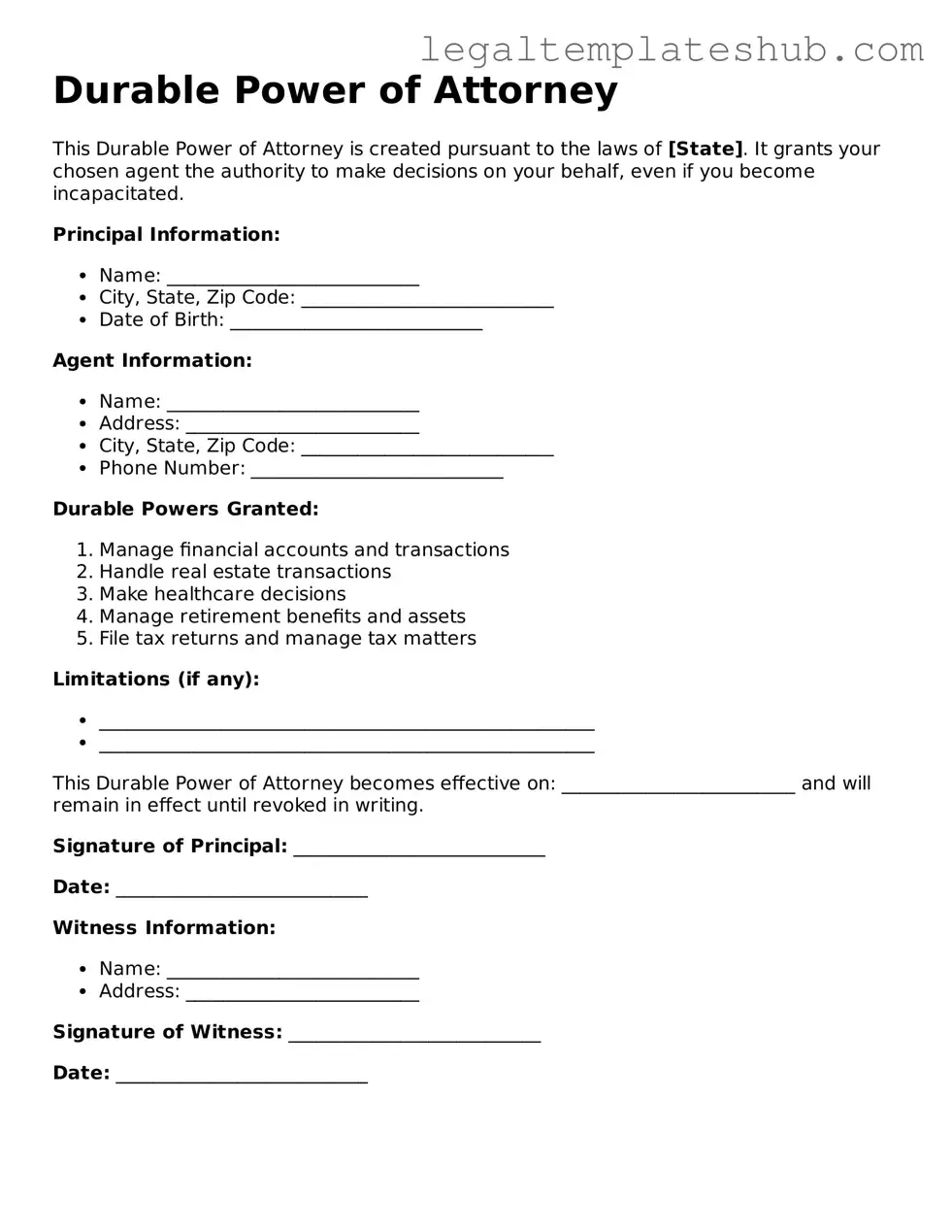Durable Power of Attorney - Adapted for State
Instructions on Filling in Durable Power of Attorney
Filling out a Durable Power of Attorney form is a crucial step in ensuring that your financial and legal matters are handled according to your wishes if you become unable to manage them yourself. Completing this form carefully will help designate someone you trust to act on your behalf. Follow these steps to ensure the form is filled out correctly.
- Obtain the Durable Power of Attorney form. You can find it online or through your local legal office.
- Begin by entering your full name and address at the top of the form. This identifies you as the principal.
- Next, provide the name and address of the person you are appointing as your agent. This person will have the authority to act on your behalf.
- Specify the powers you wish to grant your agent. This may include handling financial matters, making healthcare decisions, or managing property.
- Indicate when the powers will begin. You can choose for them to start immediately or only if you become incapacitated.
- Sign and date the form in the designated area. This step is vital for the document to be legally binding.
- Have the form notarized or witnessed, depending on your state’s requirements. This adds an extra layer of validity to your document.
- Distribute copies of the completed form to your agent, any relevant financial institutions, and your healthcare providers.
After completing these steps, your Durable Power of Attorney form will be ready for use. Ensure you keep the original document in a safe place and inform your agent of its location. Regularly review the form to ensure it still reflects your wishes, especially if your circumstances change.
